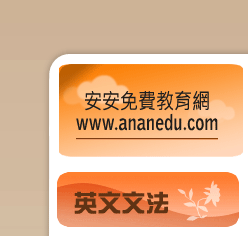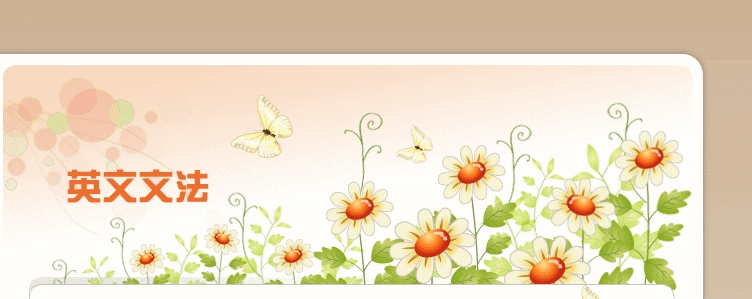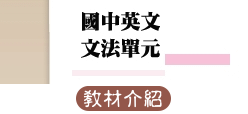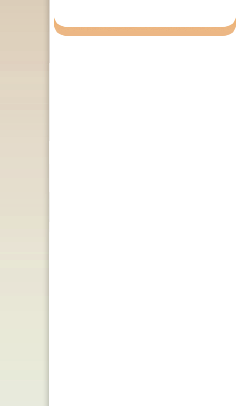本單元診斷範圍為代名詞中「主格」、「所有格」、「受格」的用法;主格的 (I / you / he / she / it / we / they) 、所有格的 (my / your / his / her / its / our / their) ,以及「受格」(me / you / him / her / it / us / them) 如何在句中正確的運用。本單元共分三部分,第一部分為是非題,分A 「受格」、B 「主格」、「所有格」、「受格」的混和運用;測驗目的為能分辨「主格」、「所有格」、「受格」的不同。第二部分為選擇題,三者混和出現,使學習者更進一步 了解三者的運用時機。第三部分整段式填空,目的在於能運用自如,是比較高的挑戰。
一、是非題:
A、受格:辨別句中劃線部分受格是否使用正確,正確者寫T,錯誤者寫F。
( ) 1. Peter is my son. I love her very much.
( ) 2. Jack has a new car. He drives it every day.
( ) 3. Linda has a boyfriend. Linda often goes out with him.
( ) 4. We saw John in the park, but he didn't see me.
( ) 5. Your daughters are in America. Do you miss her all the time?
B、「主格」、「所有格」、「受格」的混和運用:辨別句中劃線部分的「格」是否使用正確,正確者寫T,錯誤者寫F。
( ) 1. He father gave him a very nice toy.
( ) 2. Mary always helps us do our homework.
( ) 3. People in Taiwan love their country.
( ) 4. Mr. and Mrs. Jones have a puppy. Its name is Lucky.
( ) 5. You two are really good husband and wife.
二、單題式選擇題:
1. Susan is opening the door, not closing .
(A) it (B) him (C) them (D) her
2. Helen is my cousin. I often call and have a talk.
(A) him (B) he (C) she (D) her
3. I have a sister. is just three years old and very cute.
(A) She (B) He (C) Her (D) His
4. Mary's brother wrote a letter to his girlfriend. It means wrote a letter to .
(A) she; him (B) her; him (C) him; she (D) he; her
5. Jack sent two tickets to Linda. It means Jack sent to .
(A) it; her (B) them; she (C) them; her (D) it; she
6. He invited Jolin and me to his party. It means he invited to his party.
(A) them (B) you (C) me (D) us
7. The police ran after a thief and then caught .
(A) they; he (B) they; him (C) he; he (D) he; him
8. After class, all the students took own things and left the classroom.
(A) they (B) their (C) them
三、整段式填空:請依據上、下文意,將空格後提示代名詞,改為適當的「格」。
Yesterday afternoon, John took Tina to (1) (he) home after school. (2) (He) showed his comic books to (3) (she). Tina was so surprised to see so many comic books. And then (4) (she) borrowed some of these books from (5) (he). The next day, Tina told (6) (she) good friends about this. (7) (They) all wanted John to lend (8) (they) some books. John asked (9) (they) not to tell (10) (they) other friends again.
|








